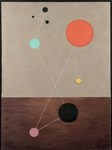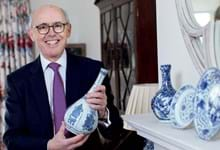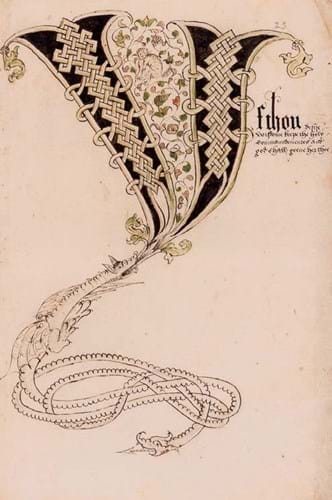
While salerooms had been postponing auctions, in the last few days of March Forum (25/20/12% buyer’s premium) held not one but two major sales on consecutive days by selling online.
A general sale had been immediately preceded on March 26 by a much larger auction of works from the library of the Birmingham Assay Office.
The firm was “fortunate in many ways…” said Rupert Powell, international head of book and works on paper sales, “…but principally in the fact that the catalogue was printed at an early date and was online and available in printed form for just over five weeks”.
That lots were available for early viewing was much appreciated by most prospective buyers, especially institutions. As the national situation kept changing an early decision was made to move the sale from the familiar Westbury Hotel venue named on the catalogue covers to Forum’s Queen’s Road salerooms in south-west London before it was forced to shut the doors to the public.
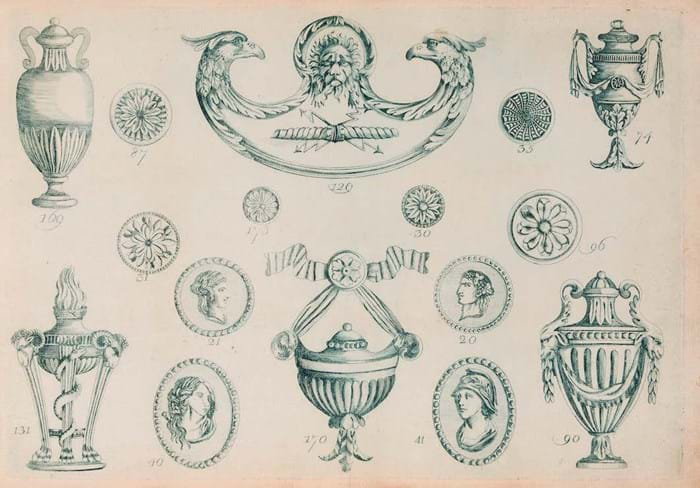
Sold at £5200, Fifteen Plates of Composition Ornaments…, an oblong folio collection printed in Stamford in 1790, featured the products of the Langwith firm of architects and builders in nearby Grantham. Some of the mostly wood engraved plates are printed in blue, as here.
Bidding marathon
By the time of the library of the Birmingham Assay Office sale the majority of potential buyers had been given enough time to view or find out whatever else they needed to know about the lots in which they were interested and Forum was geared up to deal with bidding online.
For Powell though, it was to prove something of a marathon. As potential buyers were promised, there was to be no rushing the bidding in these exceptional circumstances, but it was going to be a long day.
“I spent over nine hours conducting the bidding, with only one very short break of around 15 minutes,” he said.
Some 500-600 bidders registered and as well as those in video contact with Powell in the room – working “…at a distance from those others present” – prospective buyers were also able to place bids with Forum staff based at home.
Overall the collection raised around £750,000 on 450 or so lots and, said Powell after the event, “I don’t think that that it could have gone better in the rooms”.
One lot was withdrawn prior to sale* but though one or two others carrying four- or five-figure estimates made considerably less than suggested, they nonetheless reached their reserves.
A good number of the very many job lots on offer proved extremely successful in what in the end proved an unusual but decidedly successful white-glove sale.
Initial thoughts
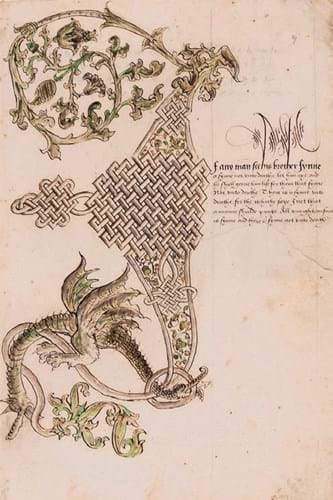
One of the elaborately decorated initials from an exceptional Elizabethan alphabet manuscript sold for £27,000 at Forum.
For the catalogue cover Forum chose to reproduce one of an exceptional group of 26 elaborate historiated initials, each with accompanying proverbs or other texts, that on the day sold for £27,000.
Comprising the 24 letters of the Elizabethan alphabet, plus two other symbols, they dated from the 1560s-70s. They may have been produced by someone working in the legal profession, though it was also mooted that they could be the work of an apprentice scrivener, perhaps as an exercise to be presented to his master.
Interesting hobby
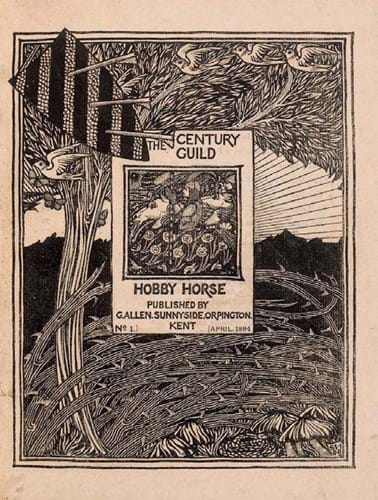
The ‘suppressed’ first issue from a complete run of The Century Guild Hobby Horse – £6500 at Forum on March 26.
The Century Guild Hobby Horse, an enormously influential magazine, was produced by the ‘Arts & Crafts’ organisation founded in 1882 by the architect Arthur H Mackmurdo.
It aimed to encourage decorative works in many fields, but with an emphasis on individual craftsmanship rather than mechanical production and was particularly significant where the new Art Nouveau style was concerned.
Printed on high-quality paper and illustrated with woodcuts, lithographs and photogravure plates, its progressive typography and design was guided by Emery Walker and it was printed at the Chiswick Press. Among its many distinguished contributors were Burne-Jones, William Morris, Ruskin and Oscar Wilde.
The first issue appeared in April 1884, but this proved a false start and no others followed until 1886, when the publishers started again at No 1.
In 1893 it was renamed The Hobby Horse, but only lasted for three more issues as such. The latter were not present in this set, but it was otherwise complete and, including that first, ‘suppressed’ issue, made a record £6500.
Chemical classification
Sold at £19,000, The Works of Geber, the Most Famous Arabian Prince and Philosopher… is a 1678 translation by Richard Russell, a distinguished English chemist, of the works of Abu Musa Jabir ibn Hayyan (c.732-c.815), whose writings contain the oldest known systematic classification of chemical substances.
No other copy of this first English translation is recorded at auction since 1938, when a copy made £38.

A leaf from the 1750 first edition of David Jefferies’ Treatise on Diamonds and Pearls… which made £5000 at Forum.
A copy of Robert Boyle’s The Sceptical Chymist… that sold for £6000 was a second edition of 1680, but the first to contain the second part of what is widely recognised as the most famous book in the history of chemistry. The binding had been rebacked but it remained a crisp and clean copy internally.
Also sold at £6000, and by a narrow margin a record sum, was one of those many works focused on money. This was a volume in 18th century boards that contained both the 1582, first and only edition of Gasparo Scaruffi’s L’Alitinonfo… and a related work by Prospero Bisi.
The former was described as a landmark treatise on money, coinage and currency exchange, and one that contains what may be the earliest call for a single universal currency.
Bid to a much higher than expected £4200 was a copy of Stephen M Leake’s Historical Account of English Money from the Conquest…
Illustrated with 14 colour plates and containing numerous ink annotations, footnotes, marginal drawings, etc, it once belonged to Sir Cuthbert Sharp, a soldier and antiquary whose annotations and additions include engravings and drawings of items in his own collection.
Not in the best of conditions but sold for a far higher than expected and record £5000 was a rare 1750 first of A Treatise on Diamonds and Pearls… by David Jeffries. Illustrated with 30 engraved plates, this was the first book in English to describe how diamonds and pearls can be evaluated by size or weight and style of cut. A 19th century edition was also part of the lot.
Sold for £2200, 10 times the low estimate, was a 1756, first German edition of Jeffries’ book, a version illustrated with just 10 plates.
In a half morocco library binding and estimated at just £300-400, but sold for £8000 was The Political Songster… of 1771 by John Freeth, or J.Free as he is styled on the title-page.
The owner of the Leicester Arms, a Birmingham inn and coffee house, Freeth wrote songs based on current events that he would then sing to entertain his customers. They proved so popular that he published a first collection of them in 1766, another great rarity.
This later selection, printed by another well-known Birmingham figure, John Baskerville, was acquired by an American collector, said Forum – one who has had to wait several decades to seize the opportunity.

The success of a few lots took Forum somewhat by surprise, among them an 1899, English language edition of Gustav Schmoranz’s Old Oriental Gilt and Enamelled Glass. Illustrated with 32 chromolitho plates, it made £6000 rather than the suggested £300-400.
Search for longitude solution
Though it did not live wholly up to expectations, selling a few thousand pounds under low estimate at £24,000, a copy of James Short’s Account of the Proceedings, in order to the Discovery of the Longitude…, a rare account of the first trial of Harrison’s famous fourth chronometer on HMS Deptford in the years 1761-62, was only the third copy seen at auction in 25 years.
In 2007 the Streeter copy made $80,000 (then around £40,000) at Christie’s New York and in 2014 a copy in a beautiful period binding offered at Sotheby’s as part of the Franklin Brooke-Hitching library reached £38,000.
Also in the recent Forum sale was a 1765 first of Harrison’s own 1765 account of the second sea trial of H4, which sold at £22,000.
Sold at £9000 was a contemporary and related work (in a modern library binding of half calf) that makes no mark in auction records. This was a brief paper of 1765, Thoughts on the Means of Improving Watches, And most particularly Those for the Use of the Sea, by a leading horologist of the age, Thomas Mudge.

Among the colour plate successes, a record-equalling £24,000 was paid for William Simpson and Sir John W Kaye’s India Ancient and Modern. This two-volume, large folio work of 1867 contains 50 chromolitho plates after Simpson, who spent three years travelling in the sub-continent to fulfil his illustrative commission.
Kelmscott Chaucer
A copy in original boards of the much admired Kelmscott edition of the works of Geoffrey Chaucer, previewed in ATG No 2429, was another of the higher-priced lots, selling at £32,000.
It features wood-engraved illustrations by WH Hooper after the originals of Sir Edward Burne-Jones and with decorative borders and initials designed by its publisher, William Morris.
One of 425 copies, it was estimated at £20,000-30,000.
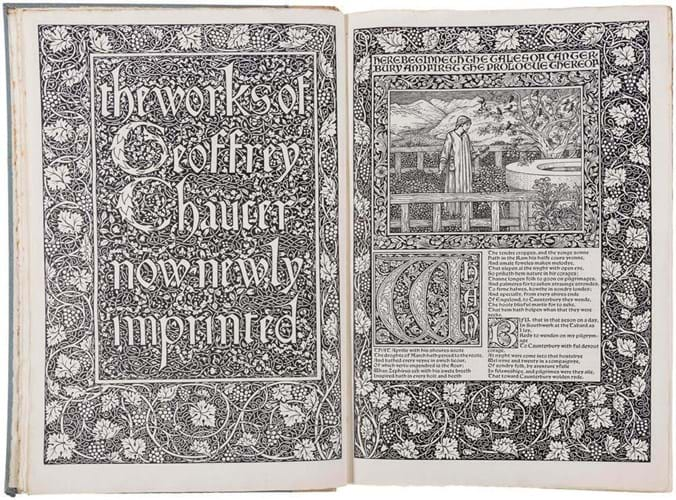
A copy in original boards of the much admired Kelmscott edition of the works of Geoffrey Chaucer was among the higher-priced lots of Forum’s Birmingham Assay Office sale, at £32,000.
A very large collection of drawings by John Flaxman, William Wyon and others made a low-estimate £30,000.
Sold at £35,000 was a monumental and handsomely bound, six-volume Russian work of the 19th century that in its English version of the title is known as Antiquities of the Russian Empire.
Compiled by Sergei Grigorevich Stroganov, the latter contains over 500 plates. It documents Russian life and society through its regal, domestic and ecclesiastical treasures. Featuring jewellery, costumes, weapons and armour, most are chromolithographs, some of them heightened in gold.
* The only lot not sold on the day was Matthew Boulton’s annotated family Bible. A finely bound example of Baskerville’s great folio Bible of 1763, it became the focus of what proved a very successful fundraising campaign to acquire it for preservation and eventual display in the Cadbury Research Library at the University of Birmingham. A week or so prior to sale it was withdrawn by the consignors and now rests in its new and permanent home.


